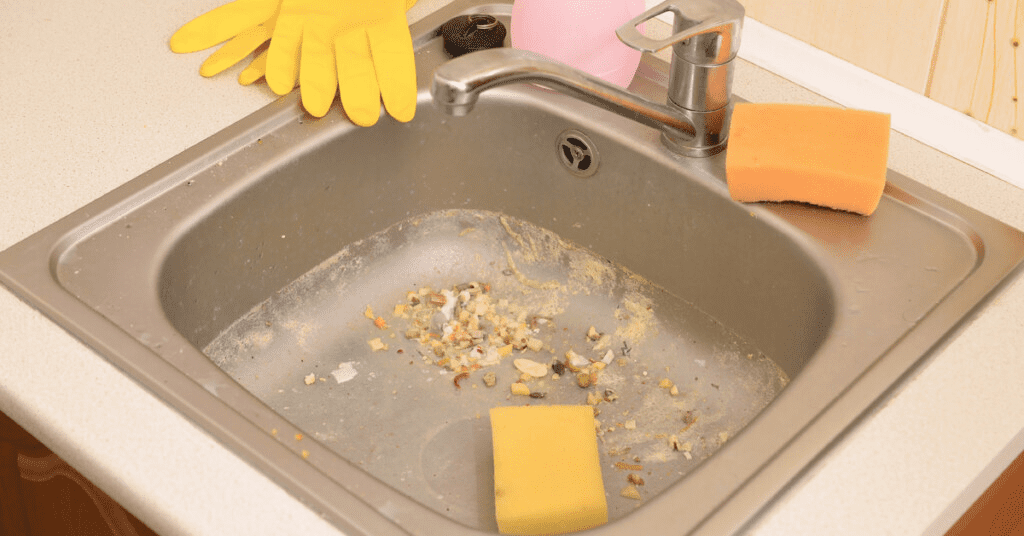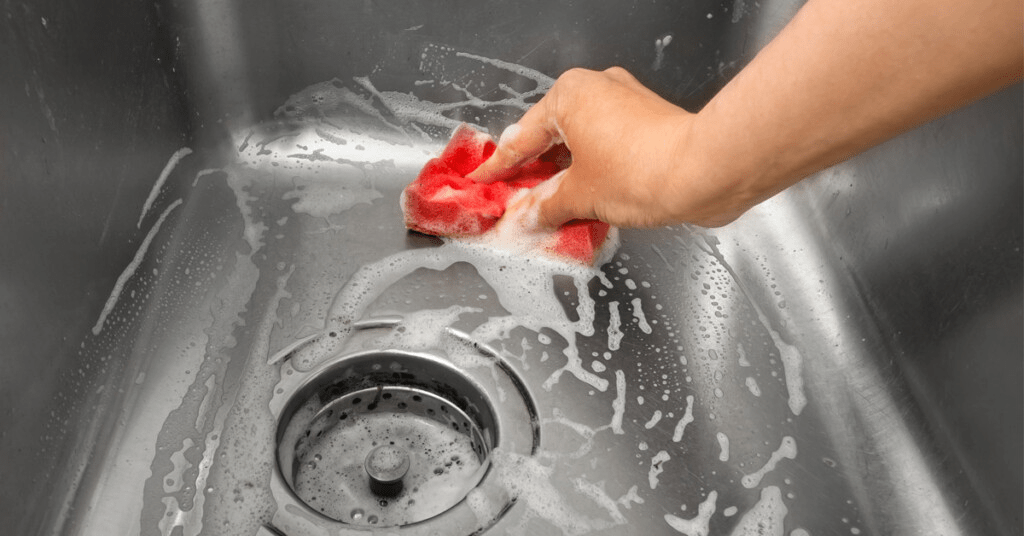How to Get Your Drains to Stop Stinking

Kitchen sink raising a stink? Don’t worry—clearing up smelly drains can be easy with the right tools and drain cleaning techniques.
What Causes A Drain to Stink?
Smelly odors in your drains can be caused by various things going wrong in your pipes. The most common causes of stinky drains include:
- Gunk and bacteria: Food, hair, grease, soap, food particles and other gunk can line your pipes. Even if the gunk doesn’t form a clog, it attracts foul-smelling bacteria.
- Clogged vent pipes: When debris clogs drain vents, water can start to pool in the sink. This sluggish water movement leads to an unpleasant odor.
- Sewer gases: Empty P-traps allow sewer gases to rise from the drain. P-traps are designed to hold a little water at all times to act as a barrier to sewer gasses. When the P-trap goes dry, the gases enter your home. This typically happens in sinks that are used infrequently.
- Plumbing errors: Missing traps or vents, leaks and rotting drain tubes can all cause odors to seep from a kitchen or bathroom sink.
The good news is, you most likely don’t need a plumber to get rid of a nasty sink smell. Most of the time, you don’t even need special equipment. These methods rely on ingredients you probably already have in your pantry.

Ways to Clean Sink and Shower Drains
Hot Water and Soap
For this method, mix a few drops of liquid dish soap with boiling water. Carefully pour half of the mixture down your drain and wait about five minutes for it to dissolve oily buildup. Next, let the cold water run for a full minute to solidify any remaining grease. Lastly, pour the remaining hot water down the drain to remove congealed residue. Repeat this process as necessary. This method also works just as well with vinegar instead of hot water.
Vinegar and Baking Soda
The fizzing reaction that happens when you mix baking soda and vinegar can quickly loosen built-up gunk. For this method, run hot water down the drain for around a minute to help soften any buildup. Then, dump one cup of baking soda down the drain followed by two cups of vinegar. Wait for the fizzing to stop, and rinse the drain first with hot then with cold water for one minute each.
Drain Snake
To effectively use a drain snake, remove the drain plug and slowly feed the snake down the drain. Then, holding it by the plastic handle, turn it slowly. The snake is covered in short, tough bristles that collect hair and other debris that coat the inside of your drain. Pull the snake up slowly, and you may find a nasty clump of hair and other buildup. Repeat as necessary.
Ways to Clean Kitchen Garbage Disposals
This comes as no surprise—kitchen garbage disposals are notorious for developing unpleasant smells due to the food that is constantly thrown down them. Similar to the other drains in your home, there are a few simple ways to get rid of stinky disposal smells.
Ice Cubes and Salt
Ice cubes are a great way to scour your disposal and get rid of grimy food buildup. For the best results, first follow the previously mentioned hot water method to clean your drain. Then, push two cups of ice cubes and one cup of table salt past the rubber flange and into your disposal.
With the cold water tap running, turn the disposal on and let it run until the ice is completely crushed. The abrasive action of the ice and salt should loosen and lift any food debris and residue on the disposal blades and impeller plate. Down the drain goes the food residue and its nasty smell.
Oxygen Bleach
If the above methods don’t neutralize your disposal’s odor, it may be that food debris has congealed further along in the system; clogs can happen where the main drain pipe connects to the sewer. To clear this pipe, you’ll need to open the plumping through the elbow-shaped P-trap directly below it.
Start by disconnecting the disposal from its power source. Put on some rubber gloves and place a large bucket beneath the P-trap. Use a wrench to unscrew the P-trap from the main drain pipe. Next, insert a rubber pipe plug into the open base of the main drain pipe.
Run the hot water tap until it rises to the top of the sink drain, then pour in a quarter cup of powdered oxygen bleach. Let the bleach sit in the sink for about an hour to disintegrate the sludge in the main drain pipe. Remove the pipe plug, and the loosened gunk should flow into the bucket. Once the main drain pipe is empty, reconnect the P-trap. Then, reconnect the garbage disposal to power and run it for 30 seconds with the hot water tap on.
Tips to Prevent Future Odors
Regular upkeep can keep your drains smelling great. In the kitchen, this means not pouring grease down the drain and flushing drains regularly with hot water. Also, try sprinkling baking soda into your drains weekly to help control odor.
To keep bathtub and shower drains from smelling, pour hot vinegar down them weekly to eliminate soap scum and oil. Run a plastic drain snake every couple of months as directed to get rid of hair. You can also install a hair-catching drain cover.
Finally, keep your P-traps from drying out. Make a habit of running water for a few minutes each week in seldom-used sinks, tubs and showers to flush and refill the P-trap. Find more helpful ways to clean your drains in our blog post, Drain Cleaning Tips.
If the odor from your drains persists despite frequent cleaning and preventive maintenance, call Lenox Plumbing at (734) 294-0959 to get your systems checked and have your drains professionally cleaned.




